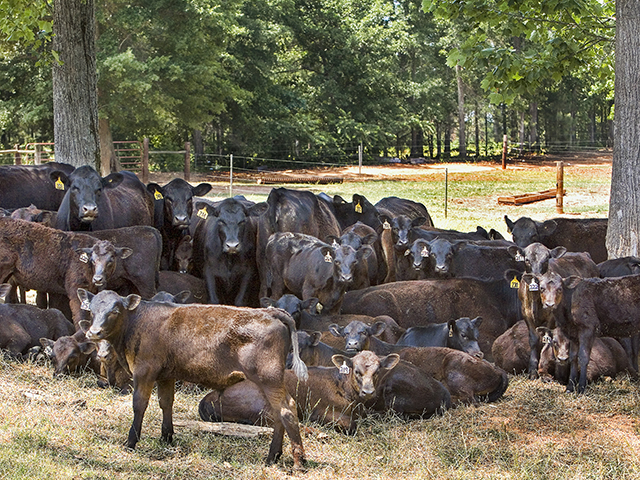Ask the Vet
The Pink Eye Challenge
READER: We have an ongoing pink eye problem in our purebred Angus herd. We thought we'd made some progress a few years ago when we purchased our own autogenous vaccine, but the problem has come back. It seems to be a year-round problem now. Do we need new swabs to make a new vaccine? Is this related to IBR? We use pour-on fly treatment because when we tried ear tags to control flies, we still had to supplement with a pour on. We need some guidance.
Dr. McMillan: Thanks for a great question. You are not alone in your battle with pink eye. We've seen a dramatic increase in pink eye in many herds during the last few years, and we are also seeing it more in the winter months.
Traditionally, true infectious bovine keratoconjunctivitis (IBK) has been associated with the bacterium Moraxella bovis, but we are seeing more cases caused by Moraxella bovoculi and, occasionally, Moraxella ovis. Effective vaccines for IBK are difficult to create, and results vary from herd to herd and even year to year. Most commercial vaccines only target M. bovis, and only one is currently available for M. bovoculi.
P[L1] D[0x0] M[300x250] OOP[F] ADUNIT[] T[]
Autogenous vaccines can be helpful in some cases in closed herds, but there are many strains of each species of Moraxella. So, an autogenous vaccine from an isolate taken several years ago might not contain the right species, or antigenic shift over time may make your vaccine less effective.
The organisms that cause IBK are often found in the eyes and respiratory tracts of normal animals. They need an invitation to cause disease. Face flies are commonly implicated. They not only can transmit the organisms, they can also cause irritation around the eyes and on corneas. Because face flies spend most of their lives off of cattle, control can be difficult. I recommend utilizing an integrated pest-management program. Fly tags and/or pour-on insecticides used at the right time of year with proper rotation of insecticide classes can be very useful in many cases. Back rubs, especially with face flaps, oilers or dust bags, are older options, but they, too, are potentially very useful. Cleaning up wet areas (especially those with decaying organic material) and using a premise treatment in barns and sheds may also help with face fly control. Insect growth regulators (IGRs) will likely be of minimal benefit for face fly control, but don't discount them, because they can be an important tool for horn fly control.
Critically examine areas animals congregate, assessing whether they have adequate shade to rest without crowding. They should be away from direct ultraviolet radiation -- this is very important. Know that self-feeders, hay rings, water troughs and many mineral feeders can easily become contaminated and increase the spread of organisms that cause pink eye. Feeding in troughs can be just as bad if there is inadequate bunk space, and cattle are crowded into a small space.
When treating affected cattle, early is better. Use an effective antibiotic. If you estimate less than 10% of the herd is affected, gather them separately for treatment. Once you are over 10 to 20% affected, the whole herd may need to be treated. Long-acting tetracycline (LA-200, Bio-Mycin 200 and generics) and Draxxin are currently approved for treatment of IBK. Placing a patch over the eye can help heal the eye and slow the spread to others in the herd.
You ask whether IBR is involved in IBK in some way. That is a matter of debate among the experts. What we do know is that anything that suppresses the immune system can lead to disease, both in people and in livestock. So, make sure these animals have proper nutrition (energy, protein, vitamins and minerals), a solid vaccination program and deworming. Sunlight, wind, dust and tall grass/weeds are common irritants, so manage in a way to limit these as much as possible.
Lastly, I strongly advise consulting with your herd veterinarian for an assessment of the situation and a consideration of the best treatment options for your unique operation. Not only can they help with treatment, they might be able to help find and correct some of the underlying causes for this costly problem.
**
-- Please contact your veterinarian with questions pertaining to the health of your herd. Every operation is unique, and the information in this column does not pertain to all situations. This is not intended as medical advice but is purely for informational purposes.
-- Write Dr. Ken McMillan at Ask The Vet, 2204 Lakeshore Dr., Suite 415, Birmingham, AL 35209, or email vet@progressivefarmer.com
[PF_1221]
(c) Copyright 2021 DTN, LLC. All rights reserved.




